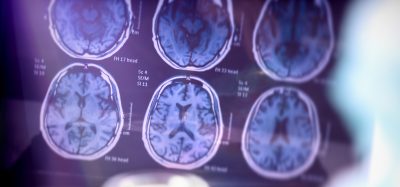New investigational therapy shows promise for treating skeletal disorders
Posted: 22 May 2025 | Drug Target Review | No comments yet
Tyra Biosciences has announced new data showing that its investigational therapy, TYRA-300, improves bone growth and corrects skeletal abnormalities in preclinical models of achondroplasia and hypochondroplasia.


Tyra Biosciences has released new preclinical findings supporting the potential of its investigational therapy, TYRA-300, as a treatment for skeletal dysplasia caused by FGFR3 mutations, including achondroplasia (ACH) and hypochondroplasia (HCH). The data, generated using disease-relevant mouse models, suggest that TYRA-300 could help address the underlying biological dysfunction responsible for these disorders, offering hope for improved treatment options.
Achondroplasia, the most common form of dwarfism, and its milder counterpart hypochondroplasia are both caused by activating mutations in the fibroblast growth factor receptor 3 (FGFR3) gene. These mutations lead to excessive FGFR3 activity, disrupting skeletal development and resulting in abnormal bone growth, joint complications and other medical challenges.
Key preclinical outcomes
In transgenic mouse models designed to simulate the effects of ACH and HCH, the therapy demonstrated multiple positive effects on skeletal growth and development:
Biomarkers aren’t just supporting drug discovery – they’re driving it
FREE market report
From smarter trials to faster insights, this report unpacks the science, strategy and real-world impact behind the next generation of precision therapies.
What you’ll unlock:
- How biomarkers are guiding dose selection and early efficacy decisions in complex trials
- Why multi-omics, liquid biopsy and digital tools are redefining the discovery process
- What makes lab data regulatory-ready and why alignment matters from day one
Explore how biomarkers are shaping early drug development
Access the full report – it’s free!
- Enhanced bone growth – TYRA-300 improved overall bone growth in mouse models of both achondroplasia and hypochondroplasia
- Cranial development – In mice with ACH, the therapy increased the size of the foramen magnum, a key opening at the base of the skull often abnormally small in patients with the condition. It also improved overall skull morphology, potentially reducing the risk of neurological complications.
- Growth plate architecture – TYRA-300 normalised the architecture of the growth plate, the area of developing tissue near the ends of long bones. This was achieved by increasing chondrocyte proliferation and differentiation, two processes essential for healthy bone elongation.
These findings support the mechanistic rationale behind TYRA-300’s development: that by modulating overactive FGFR3 signalling, the therapy may restore more typical skeletal development in patients with these genetic conditions.
A dual-path development strategy
While TYRA-300 is also being developed for oncology indications, these results add meaningful momentum to its parallel development path in skeletal dysplasia. The company’s dual focus could position TYRA-300 as a new, disease-modifying therapy for patients with limited treatment options.
Tyra Biosciences has not yet announced a timeline for clinical trials in skeletal dysplasia, but these preclinical results mark a major step towards advancing TYRA-300 into human studies.
As the company continues to explore the potential of FGFR3-targeted therapies, TYRA-300 may represent a new pathway for treating rare skeletal disorders and certain cancers driven by FGFR3 abnormalities.
Related topics
Animal Models, Disease Research, Drug Development, Drug Discovery, Drug Discovery Processes, Drug Targets, Genetic Analysis, Molecular Biology, Therapeutics, Translational Science
Related conditions
achondroplasia (ACH), hypochondroplasia (HCH)
Related organisations
Tyra Biosciences








